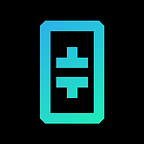Theta Network featured at the Samsung Developer Conference to demo integration in smart TVs
We’re excited to announce that after successfully testing the Theta protocol in smart TVs like the Samsung QLED 4K Q70, Theta Network has been chosen as a featured project at the Samsung Developer Conference (SDC) in San Jose! Since July we’ve been working with Samsung’s Visual Display division to enable Theta video delivery in Samsung TVs, and now with SDC coming up on October 29–30, we’re finally ready to display our progress to the public. If you are attending SDC in person, be sure to stop by the Samsung Visual Display area to check out our live demo.
The live demo of Theta in Samsung’s smart TVs is focused on how video streams can be efficiently shared between multiple Samsung devices including TVs and desktop PCs. Samsung and SLIVER.tv content will be shared within our peer-to-peer network, demonstrating our vision of an any-device network sharing data using the Theta Network. The demo will also highlight the flexibility of the Theta protocol, featuring video streams in HLS and DASH formats, in both Full High Definition (1920x1080P) and Ultra High Definition (3840x2160P), and both livestreaming and Video-on-Demand use cases. This flexibility is key to the Theta protocol being compatible with as many devices and content providers as possible.
Because the hardware in these smart TVs is specifically designed for video streaming, integrating Theta to augment some of the applications for operating in a mesh network was a logical step to take. Most TVs these days are basically mini computers and can handle all types of entertainment the average person may use a computer for: browsing the internet, watching movies, or even playing games. It’s now standard for TVs to come with at least 2GB of RAM, 1.5–2GHz of CPU with quadcore or octacore processors, and at least 16GB of local storage disc space. Not to mention, the custom-made processors that are manufactured specifically to support rendering crisp 4K or 8K picture quality. And because the Theta native core is not compute-intensive, running it on TVs with these specs is totally seamless. TVs can become relay nodes that are effectively on the edge of the network, and onboarding hundreds of thousands to millions of these devices could significantly bolster Theta’s network capacity.
While our work with Samsung is early, the potential is enormous — imagine if anyone with a Samsung TV in their living room could be earning tokens passively by sharing bandwidth with nearby users? This is the kind of easy-to-use, intuitive use case that can bring blockchain technology to the everyday consumer and lead to mass adoption. Our work continues to develop this into a production-ready implementation that can be used in all smart TVs.
It’s a big step toward our vision of 100s of millions of connected devices worldwide participating in Theta’s decentralized data delivery network, and earning TFUEL for their network contributions. Later this week we’ll release a preview video of the Theta — Samsung demo, then next week it’s showtime at SDC! If you can’t make it in person to San Jose, be sure to follow Theta Network on Twitter to catch our video highlights throughout the conference.
Cheers,
The Theta team
